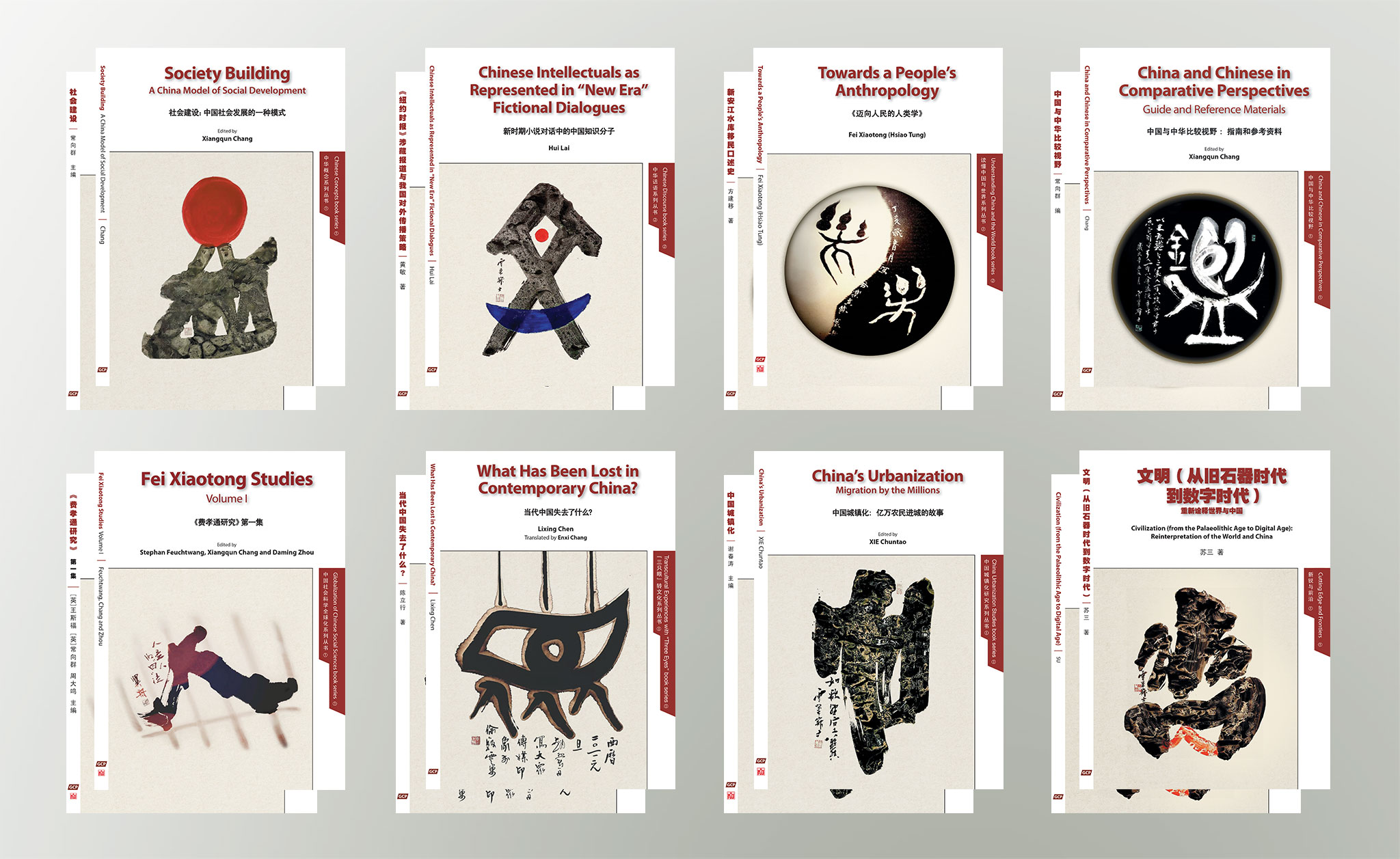GCP creates a unique feature for a dual language service with global and transcultural perspectives
GCP publishes social scientific and humanities academic and popular books bilingually. Some books have both English and Chinese editions, and other books have only an English or a Chinese edition. GCP provides English and Chinese dual language information in all journals and books. In the case of an English book, the Chinese part of the dual language information is designed to assist Chinese readers. Similarly, two of the journals are in Chinese, and the English part of the dual language information includes material to help non-Chinese speakers appreciate the endeavours in this field outside the English-speaking world.
Currently, GCP publishes three cutting edge academic journals, one proceedings series and eight book series that encourage the study of China in global and comparative perspectives. These transcultural products demonstrate how GCA contributes to global academia and participates in building a shared common future. The extended sections called ‘Abstract and about the author’ (3.2.1), ‘Table of contents’ (3.2.2) and ‘About the book series and other books in this series’ (3.2.3) provide readers with a bigger picture beyond this book.
We use a complete map of the world as the background for all covers of journals and the Global China Dialogue (GCD) Proceedings, with different, contrasting versions of the design. Journal of China in Global and Comparative Perspectives (JCGCP) has three horizontal bars of colour, whereas Journal of Chinese for Social Science (JCSS), Journal of Corpus Approaches to Chinese Social Science (JCACSS) and Global China Dialogue Proceedings series (GCDP) feature ‘black on white’ and ‘white on black’ treatments on the front and back covers. Together, these images illustrate our main theme of ‘global and comparative perspectives’.
The covers of all the book series feature ‘calligraphy paintings’ (书画) selected from the transcultural works of British–Chinese calligrapher and artist Yizhou Zhao (赵翼舟), one of the finest contemporary Chinese calligraphers in the world. Each image is based on a Chinese character or phrase that to a certain extent reflects the theme of each series. For example, the Chinese character 旦 (dawn) is used for the ‘Chinese Concepts’ series; 文明 (civilization) for the ‘Chinese Discourse’ series; 乐 (happiness) for the ‘Understanding China and the World’ series; 鑑 (鉴 reflect, scrutinize, comparison) for ‘China and Chinese in Comparative Perspectives’ series; 人 (people or human beings) for the ‘Globalization of Chinese Social Sciences’ series; 众 (the masses or crowd) for the ‘Transcultural Experiences with “Three Eyes”’ series; 心 (heart) for the ‘China Urbanization Studies’ series; and 幽人 (people who are uniquely independent and creative because they live in seclusion) for the ‘Cutting Edge and Frontiers’ series. Some of the characters are directly used as the title of the image, and some of them offer more elaborate and specific meanings, e.g. ‘Man is man’s prisoner’ (《人是人的囚徒》) and ‘Mass media’ (《大众与传媒》). In the case of ‘Everybody can enjoy his own happiness’ (《各乐其乐》), the image represents yin and yang, the typical Chinese way of thinking. The artist’s rich process synthesizes the materials (including acrylic on watercolour paper, ink on rice paper, and oils) and techniques found in China and the West, and draws on the histories of both spheres to offer a dialogue between them. With deep aesthetic and philosophical underpinnings, informed by his many transcultural experiences between Chinese and Western cultures, Zhao’s work strikes a balance between tradition and innovation and illustrates the aims of both GCA and GCP.
 At GCP, every journal article or book is a transcultural product. This process carries through every step of production. The transcultural partnership between authors and editors, copyeditors, proofreaders, graphic designers and typesetters is the heart of GCP’s model, and demonstrates everything that GCP and GCA strive for.
At GCP, every journal article or book is a transcultural product. This process carries through every step of production. The transcultural partnership between authors and editors, copyeditors, proofreaders, graphic designers and typesetters is the heart of GCP’s model, and demonstrates everything that GCP and GCA strive for.
More details see Part III Dual language information of GCP House Style Guide
3.1 GCP dual language service and style
3.1.1 GCP creates a unique feature for a dual language service with global and transcultural perspectives
3.1.2 GCP style rules for rendering Chinese-English dual languages
3.1.3 GCP style rules for punctuation marks in Chinese and English bilingual typesetting
3.1.4 GCP style rules for Chinese and related names
3.1.5 Dual language elements for submission
3.1.6 Examples of Global Century Press book series
3.1.7 Journals and periodicals
3.2. A sample of dual language information for each book
3.2.1 Abstract and about the author
3.2.2 Table of contents
3.2.3 About the book series and other books in this series



